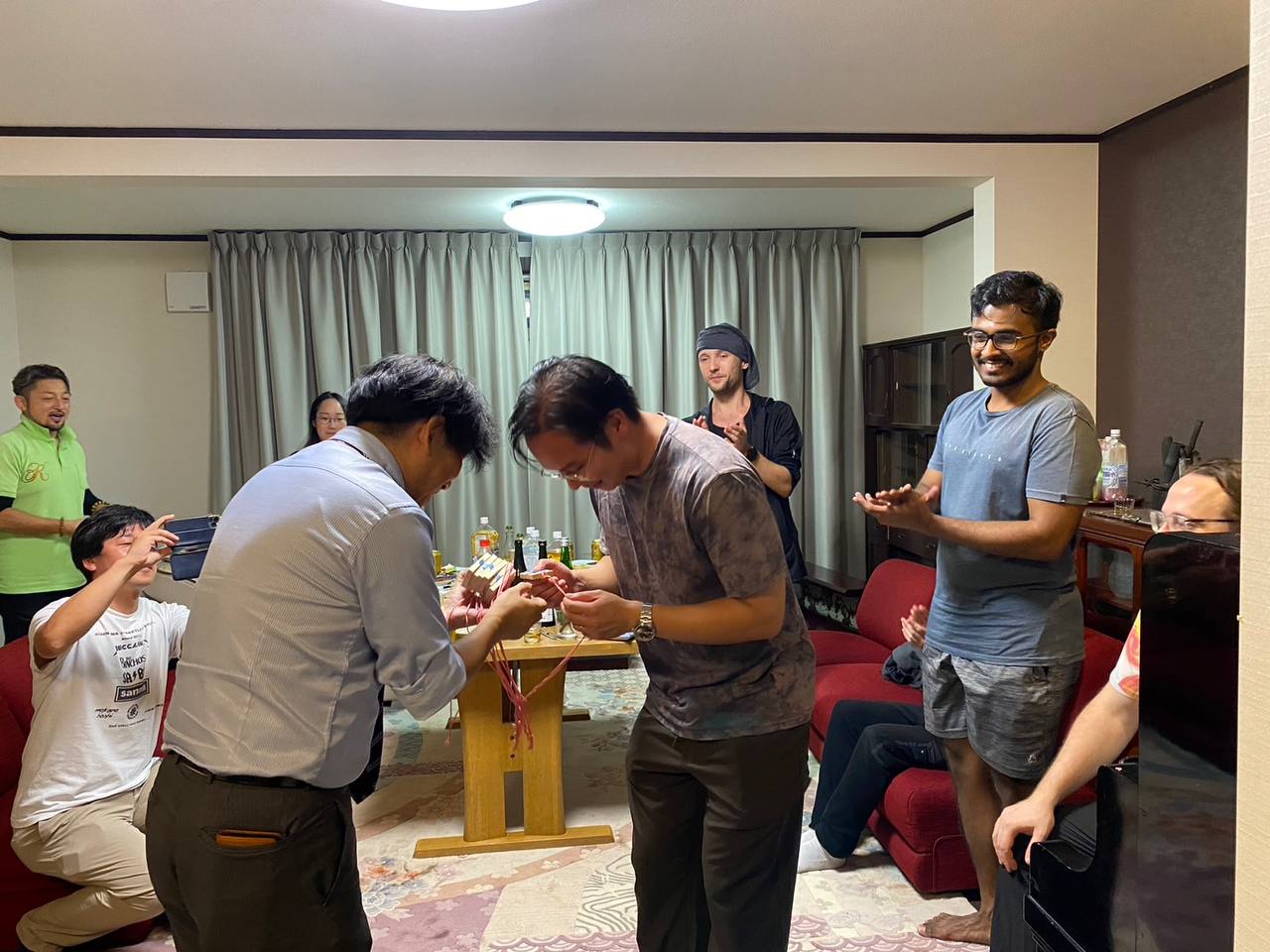Hackatsuon 2025
Hackatsuon 2025: My Experience
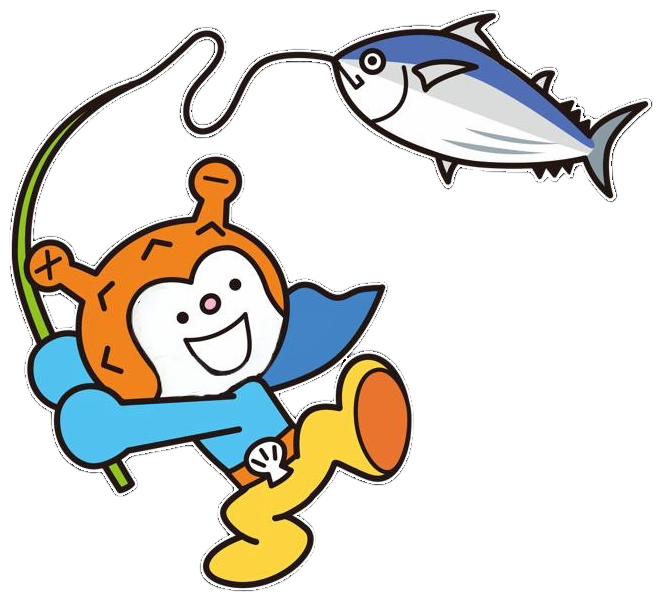
What is Hackatsuon?
From October 5th to October 17th, I visited Kesennuma, Miyagi to participate in the first Hackatsuon event. This hackathon was around applying Web3 and Artificial Intelligence technologies to the challenges that Kesennuma faces as a small town in rural Japan, with declining population and severe natural disaster in recent memories. Before actually participating, this was about the extent of what I understood this hackathon to be. I knew that they would provide room and board for the duration of our participation, and that we would have some contact with the local community to inform our solution creation. Other than that, I was going in blind. I was going to be living with strangers for two weeks, working on solutions for a community that I had no connection with before.
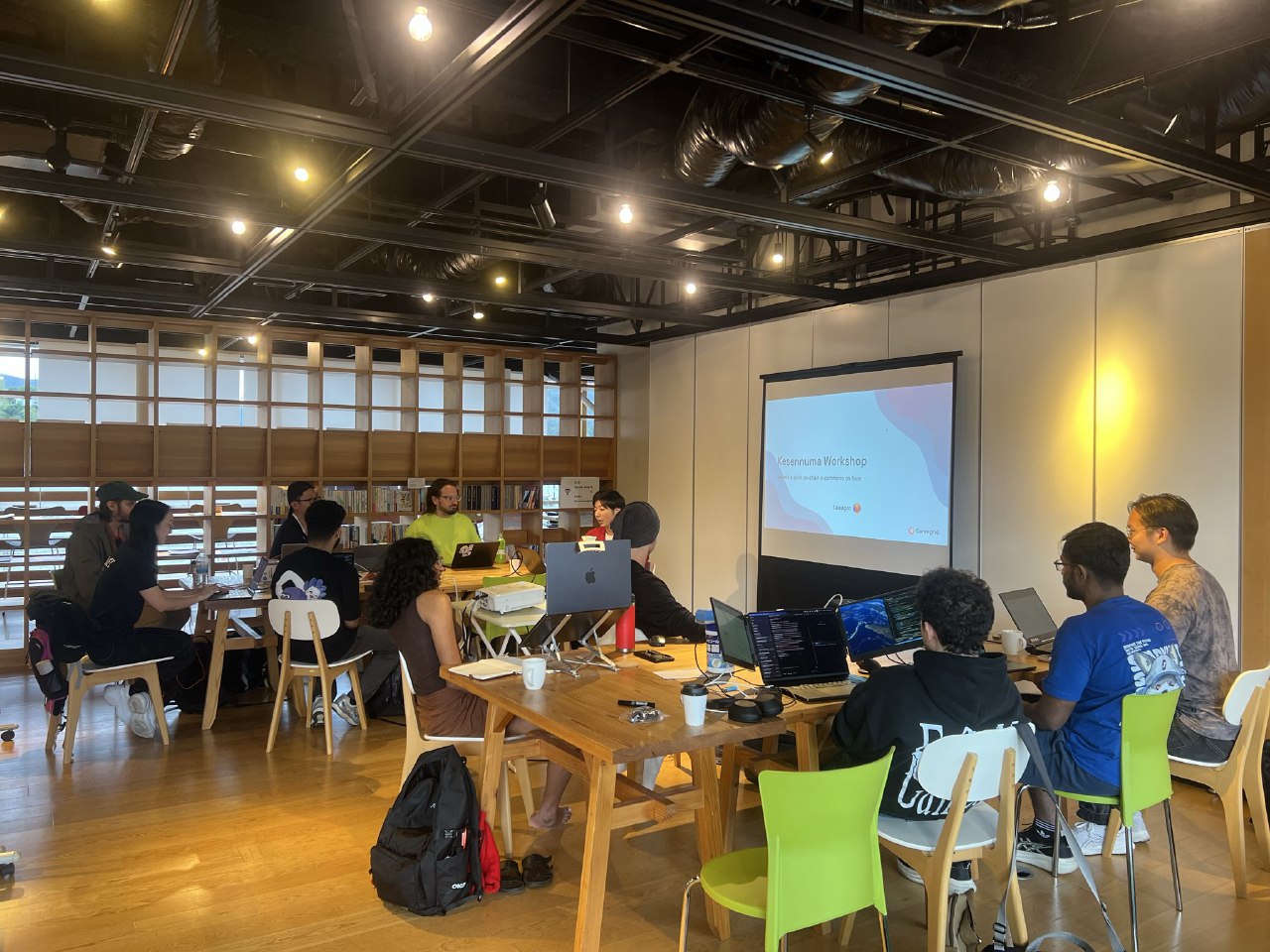
Why did I decide to participate in Hackatsuon?
I participated in the Hackatsuon for two main reasons. Firstly, the Hackatsuon was happening in the town of Kesennuma, which I had known before as the port with the largest landings of sharks in all of Japan. I have been working in the Marine Biodiversity and Conservation Lab under Dr. Nicholas K. Dulvy for the past few years, and our work focuses on sharks and rays, particularly on how they are impacted by human activities (ex. overfishing). Naturally, I had to jump on the opportunity to visit and see first-hand what a community that depends on fisheries is like. Secondly, I saw the emphasis of the program on connecting with the local community in the problem-solving process, rather than as an afterthought as is too common in these hackathon events. Having moved to Japan recently, I thought that this would be a great chance to explore how I could contribute my skillsets to communities in Japan.
Research in the community
Kesennuma City Memorial Museum (Ruins of Koyo High School)
As a group, we made a trip to the Kesennuma City Memorial Museum, where the ruins of Koyo High School are preserved as it was on March 11th, 2011, following the 2011 Great Eastern Japan Earthquake and Tsunami. This was an important part of our Hackatsuon residency, in order to understand the story of Kesennuma and the experiences that the people here carry.
On this visit, I was overwhelmingly filled with the feelings of tragedy and sorrow, as well as fear, imagining what the experience of the survivors and the victims of the tsunami. The amount of destruction was unreal, from an ocean that looks so calm and serene on the days I visited. Thousands of people separated from their loved ones and unable to be reunited in this life. It makes me want to hold my loved ones closer.
These stories of survivors losing their families and communities, but still having to move forward, really touched me. One particular video of the valedictorian speech of the junior high graduating class moved me the most. The tsunami hit in March, on the day before their graduation ceremony. What should have been a joyful, proud moment turned to the greatest tragedy. Even in the face of such destruction and loss, the valedictorian, who couldn’t be older than 15 years old, represented his classmates’ heavy emotions to the grieving public. The junior high gymnasium turned into an evacuation sheter, so this speech happened in front of hundreds of others that carried these losses as well. Fifteen years later, Kesennuma is a reslient and beautiful community, full of passionate and motivated people, as I was so lucky to meet.
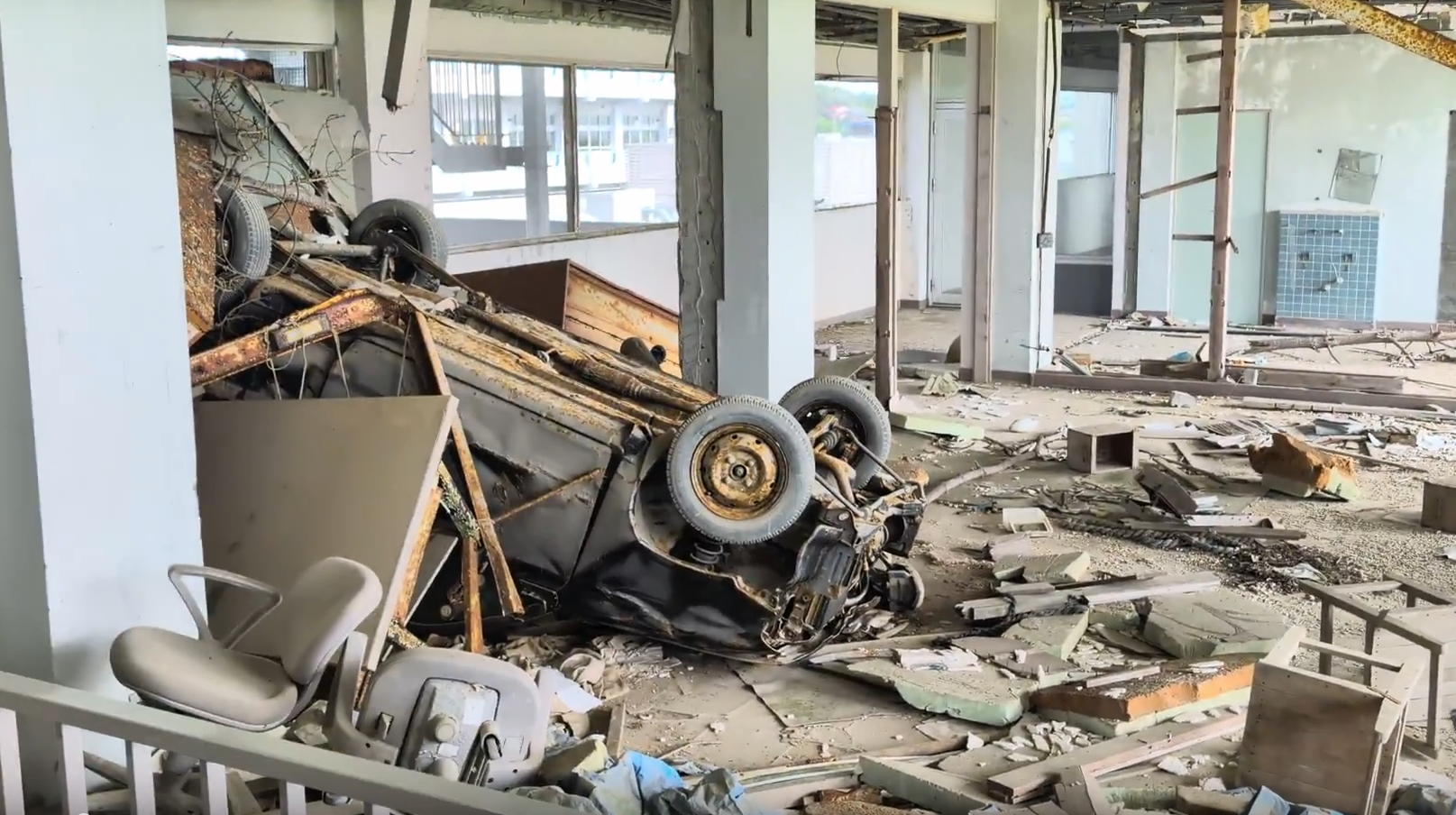
Getting up close and personal in the Kesennuma Fishing Industry.
The fishing boats dock and land their fish, where the fish is then sold just a few steps away from the boat they were caught on. I got to visit early in the morning, starting around 6:30 AM, to see the market open up and see how the fish auctions were conducted. The pelagic longline auctions were quite calm; blind bids were submitted via specialized paper form, with the results announced on digital screens. The coastal fisheries auctions are now conducted entirely digitally via tablets, while the bonito fisheries auctions are still done on chalkboards. Since this market was destroyed in the 2011 Great Eastern Japan Earthquake and Tsunami, the rebuilt facilities were relatively new and therefore was the site of some of the first digitization efforts in Japanese fish markets. However, now these systems are starting to age and other markets have more advanced technologies. Kesennuma Fish Market represents an opportunity for digital transformation, with their openness for innovation.
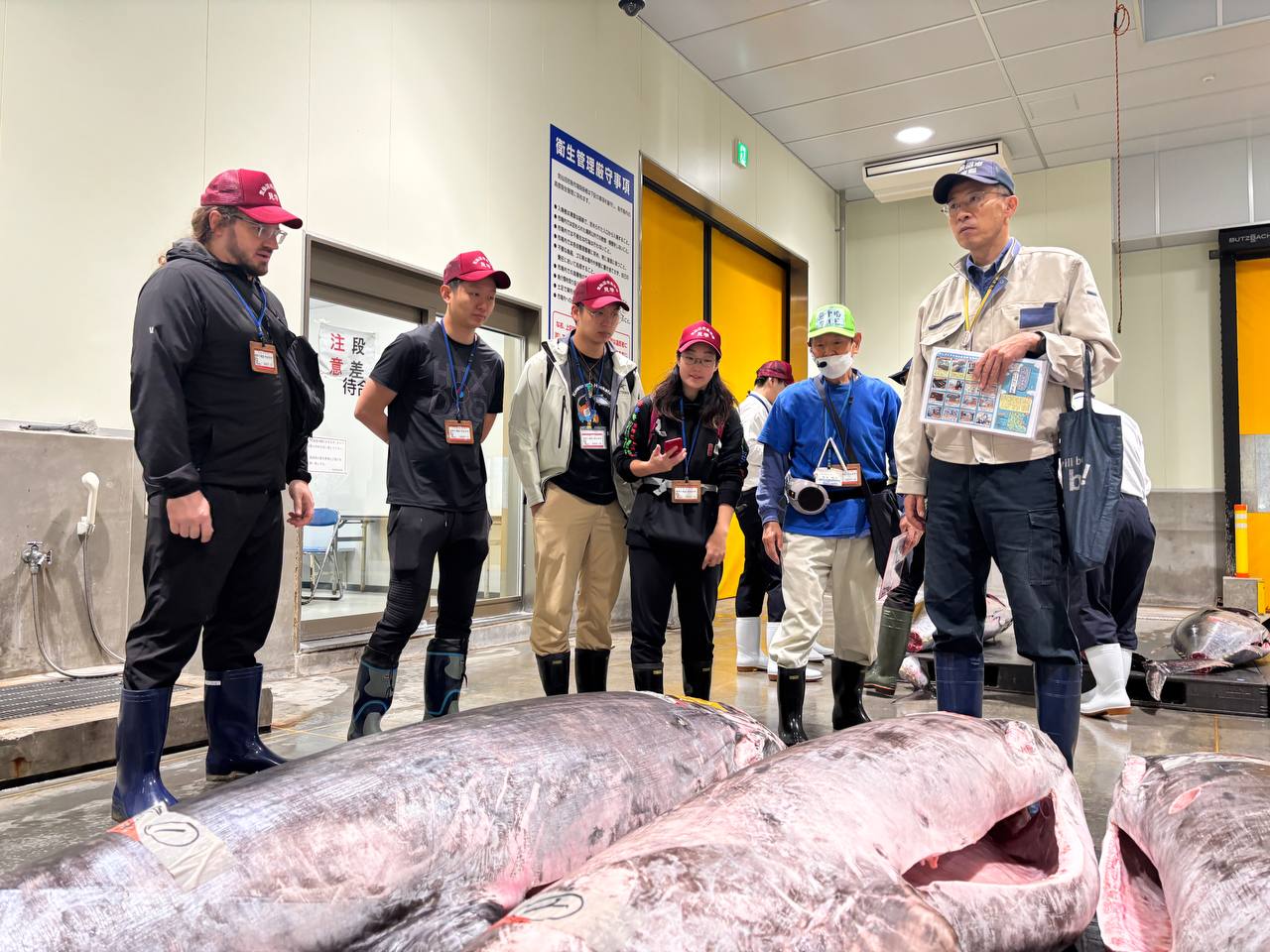
I also got to see the midnight landings of the swordfish, shark, and tuna longline fisheries. These boats unload their catch from midnight to 3 or 4 AM in the morning. Only a few people outside of the industry get to see this, usually media companies. Very rarely do individual people go to the markets at night like this, even within locals of Kesennuma. I captured the experience across a series of Instagram stories, which I plan on editing into a reel to make it easier to share. What an once-in-a-lifetime experience!
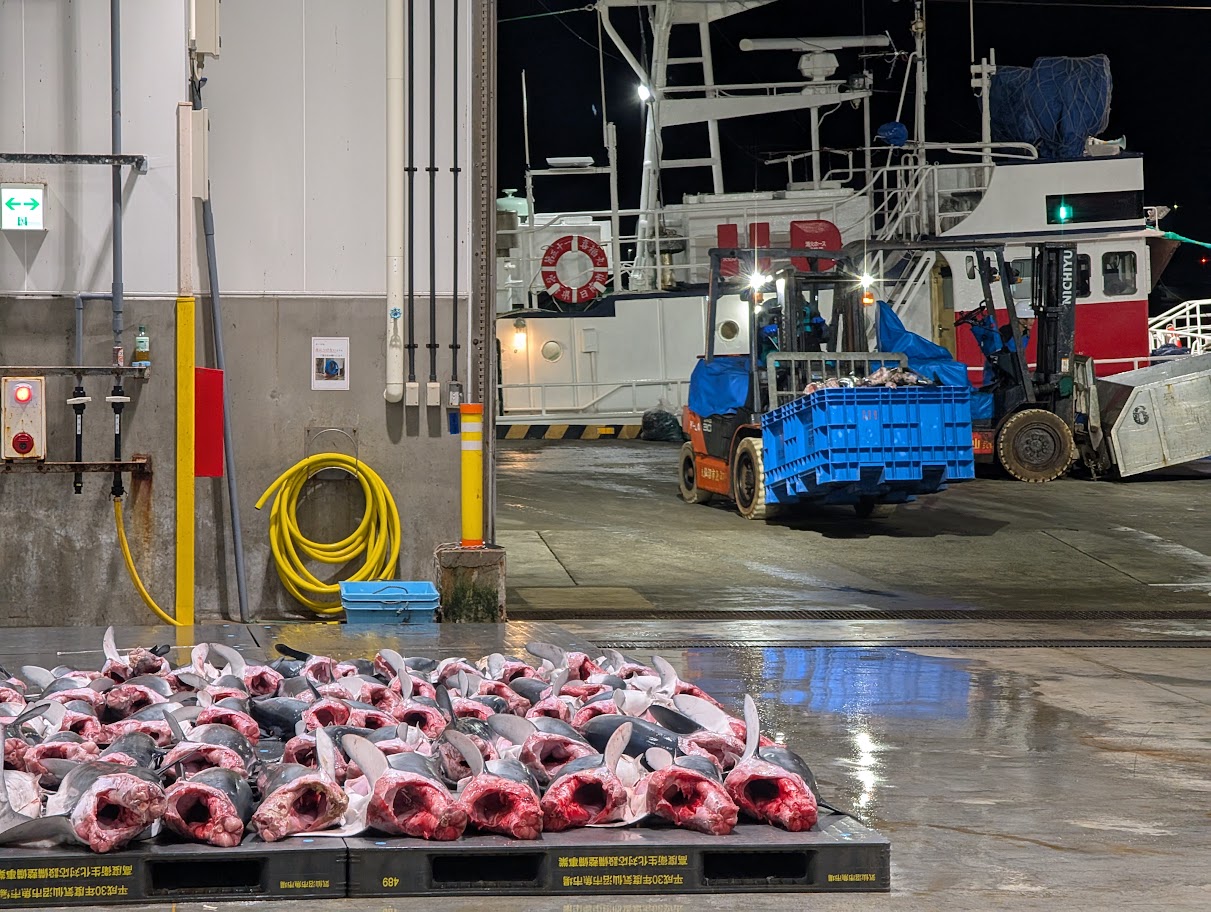
We met with Sotaro Usui, the president of Usufuku Honten, to hear firsthand the challenges that the fisheries industry in Kesennuma face, while upholding their standards of quality and sustainability. Usufuku Honten is the only company that has MSC-certified bluefin tuna. Whilst they follow fishing quotas and regulations very strictly, including tracking their catch to the individual fish, they struggle with competing in the market. Other fishing companies, such as from China, may not follow these regulations set by international bodies - called Illegal, Unreported, Unregulated (IUU) fishing. Yet, Japan is the largest buyer of fish from IUU, as it is cheaper than fish caught responsibly. EU, USA, and Canada have been putting in legislation to reduce IUU fishing by restricting the sale of their catch, but Japan’s regulations are full of loopholes and lack enforcement. Japan’s seafood supply chain needs to be overhauled to enable sustainable fisheries to also be financially sustainable, whilst reducing demand for IUU fishing.
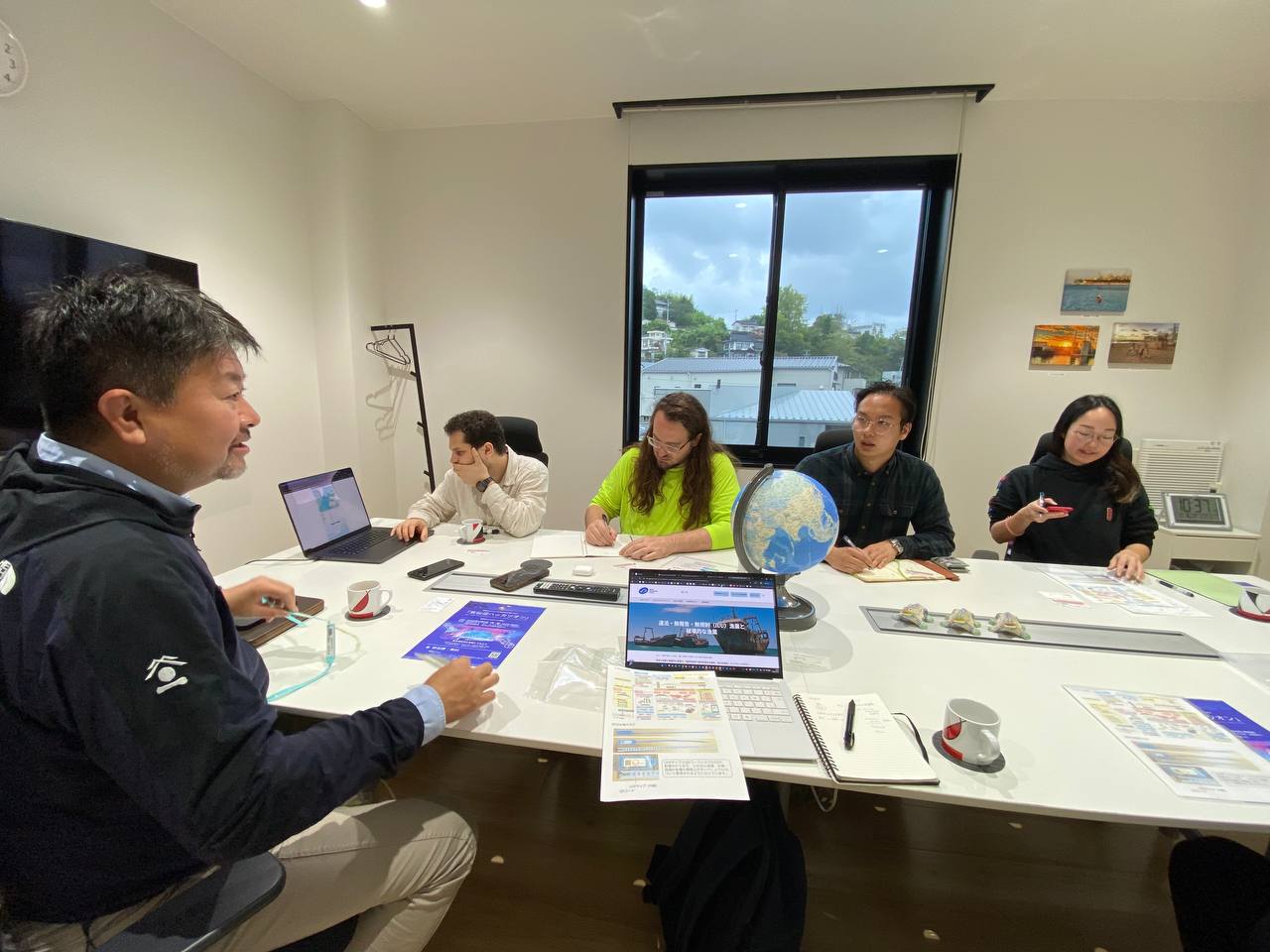
What we built
Here, I describe briefly the projects that I worked on while participating in Hackatsuon. I plan on writing more substantive case studies on each one, linking the solutions we built with descriptions of the real challenges faced by the community.
KesenMemento
Description
KesenMemento connects people with the place of Kesennuma, centered around a 3D map that users can freely explore and contribute their stories that connect them to Kesennuma. We wanted to address the challenge of engaging related residents and motivating tourists to visit Kesennuma. By creating this platform that organically shows users the stories of Kesennuma, the town can differentiate itself from other rural communities and better represent itself on the web, where a greater number of people can appreciate Kesennuma.
My Contribution
I took on a Project Manager role, taking the lead on creating the spec and discretizing work into GitHub issues, so that Sailesh could implement them. My focus was on clearly describing the intended features of the platform and the user flows through the website. I presented the project in Japanese and English for the final public event.
ReelDeel
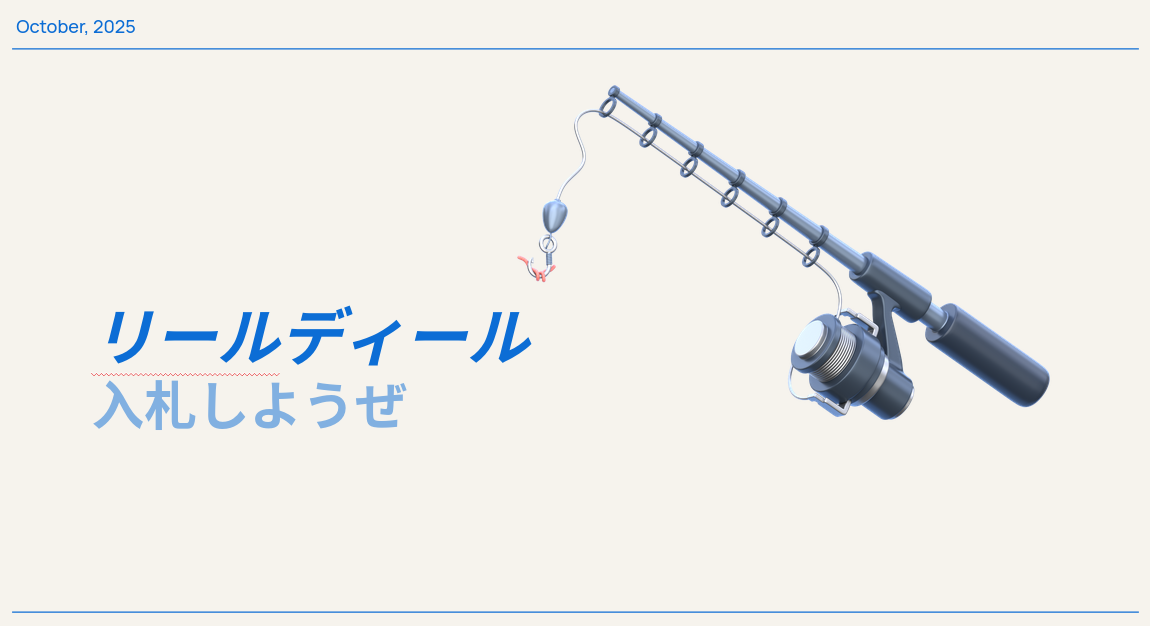
Description
ReelDeel is a seafood auctioning platform, that empowers local suppliers to connect with the global market. The seafood auction can be complicated and dynamic, making it difficult for those outside of the industry to understand. Using natural language, users can request and purchase seafood via their choice of AI agent (ex. ChatGPT). Currently, the seafood auction can only be accessed in person. Using ReelDeel, users can hire a local representative to bid on their behalf, opening access to the markets to those outside of Kesennuma without disrupting the local system.
My Contribution
I contributed to ReelDeel by translating and facilitating communication with potential users and stakeholders in Japanese. I also did the final presentation of ReelDeel in Japanese. I provided my understanding of the fisheries industry, via my background in my research on sharks and rays impacted by fisheries.
Learnings: Web3 and AI
What is Web3?
Web3 is a broad category of technologies that are used for creating scarcity and ownership of digital assets. These include blockchain (ex. cryptocurrencies) and NFTs (non-fungible tokens). I find it easier to understand Web3 by thinking about what Web2 and Web1 internet technologies are. Starting from the earlier days of internet adoption in the 1990s, Web1 internet focused mostly around broadcasting of information, similar to radio or cable TV. Information from one source was consumed by many. Starting in the 2000s, the internet evolved into a place where everyone could create and share their content. This era is defined by social media and smartphones, with the tools for creating and publishing our stories on the internet could be accessed by the masses. While Web2 has allowed the proliferation of the ability to create of digital assets (photos, videos, audio, art, text, etc.), this created a new challenge of ownership and fungibility. When we can endlessly copy and paste digital assets, why would anyone pay for them in the first place? How does one even pay for them in the first place when we can also copy and paste digital money? Web3 aims to solve these issues, by introducing scarcity and non-fungibility, meaning we cannot copy and paste these digital assets. Using mathematical formulas and algorithms, Web3 enforces ownership and originality without needing a centralized body, like a government or corporation, to oversee the system.
Before Hackatsuon, I had never worked with Web3 and had just researched the high-level concepts in preparation for the program. My exposure to this world was limited to listening to some podcasts and watching YouTube videos. During Hackatsuon, I got to live and work with developers from all over the world working in Web3, getting a crash course into this field.
Magicians with AI
I witnessed how Ron, one of the other participants, used Conductor and Claude Code, to use multiple AI agents at the same time while programming a fairly complicated application. He explained the process with the metaphor of “gardening”, with AI agents being prompted to work on different parts of the codebase in parallel. Writing a clear spec of the app to be developed is important in general, and it is crucial for vibecoding. We can use AI to help create and refine a spec template, elaborating on features, functions, software stack to use, edge cases, etc. This spec includes mermaid and database diagrams, to very clearly outline how the application should work. I learnt that it is critically important to keep the scope of the MVP as tight as possible, and to layer on the additional features later on. These principles of vibecoding feel a lot like project management, so it feels like the line between developers and PMs is blurring.
I experienced first-hand how fast development can happen with AI agents in the hands of a competent software engineer. I worked together with Sailesh on KesenMemento, he absolutely crushed the dev work (so insanely fast). I took on a more PM role in this hackathon, so I refined the spec and wrote the individual GitHub issues for Sailesh to implement. Sometimes, it felt like he could implement features faster than I could describe them!
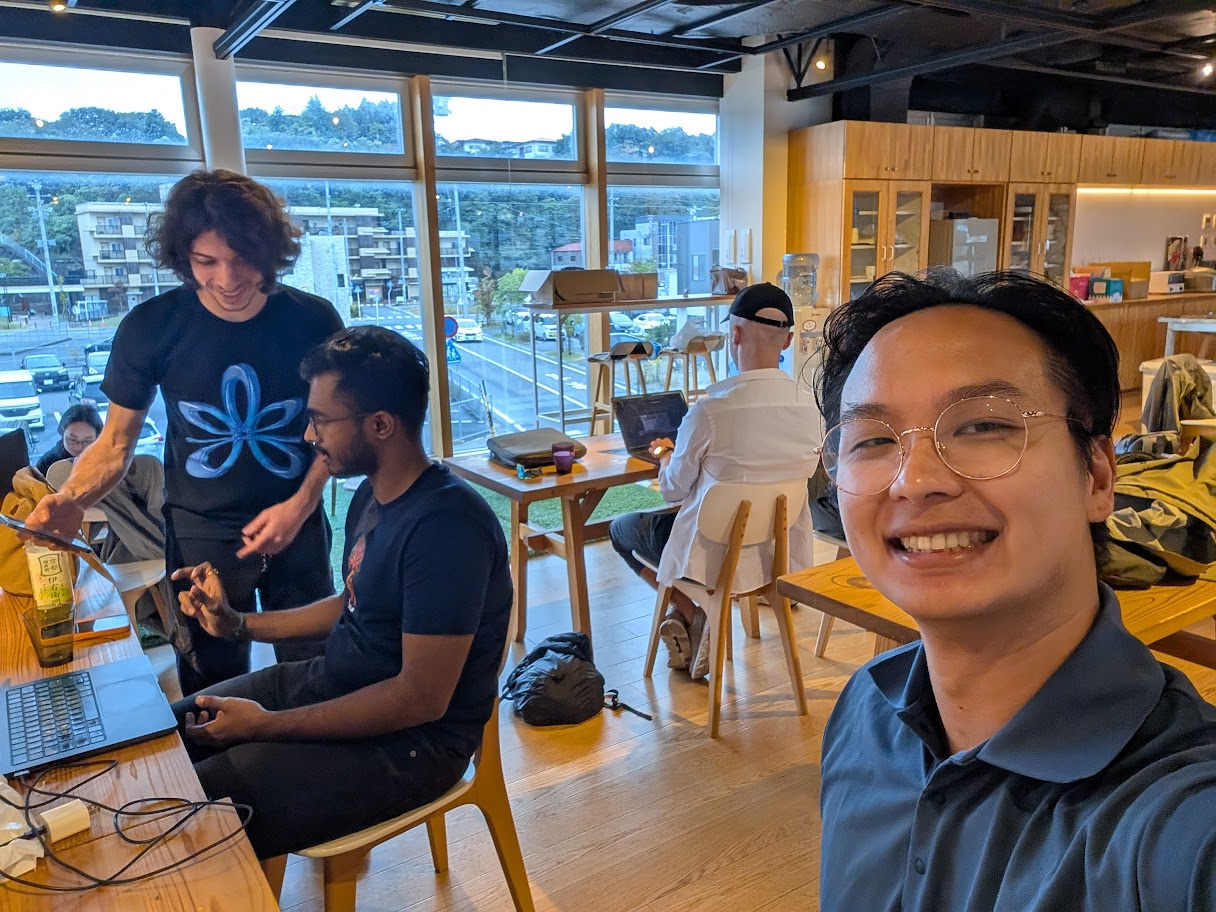
Existential crisis
Witnessing this speed of development, facilitated by AI, triggered an existential crisis in me about being a technical contributor. In the workplaces I have been in the past, I felt that I was a significant contributor and able to build what most of my colleagues could not. I taught new tools, like version control with GitHub and creating web applications with R Shiny. But the abilities of these rapidly developing AI tools, like Claude Code, are absolutely insane. My perception of what is possible has shifted dramatically during my time participating in Hackatsuon, and I realize there is no way for me to keep up without fully embracing AI in my programming. I need to use AI to do the work, the “crunchy bits”, so that I can have more time to study and socialize. Human connection is going to elevate in importance, relative to technical ability. Surprisingly, I feel less anxious as I learn that AI is going to be better at programming than I am. It frees up my mind from the “grind” mindset, so that I can focus on directing effort, whether from AI or from people. Bruteforcing my way through work is a total waste of time, with AI capable of doing this instead. AI can do a lot, but it won’t be able to feel love, have fun, or live life on my behalf. I should put as much of my effort towards maximizing these in my life.
Limitations of vibe-coding
While AI has a lot of impressive capability, I also experienced first-hand that vibe-coding can only go so far. I first tried vibecoding with Claude Code directly working on one of my existing projects (Bowen Biodiversity Web App), which worked really well to create some tests and improve the maintainability of the application. This is a codebase that I developed entirely myself, and therefore I knew it well enough to evaluate how well Claude was doing. This let me correct and guide Claude’s code suggestions, which helped immensely with the quality of it’s code output.
I then tried to vibecode on the KesenMemento project, which used React, NextJS and Supabase. I had almost no experience in this stack, so I was completely helpless to Claude’s suggestions. I was blindly accepting the suggested code. I could vaguely guess what the issues were when the application didn’t work as intended, but I had no idea how to troubleshoot and fix them. I tried to use Claude for this, but it kept digging a deeper and more complicated hole and altered the codebase beyond the scope of the problem. Without the ability to constrain the AI’s work and guide it towards a solution, I ended up with complete slop. AI is not a replacement for developer skill yet, but it is good enough to speed up and improve development.
Key Takeaways:
Greater importance of skill improvement and self-development. The time and effort saved from AI usage needs to be put towards further improving myself. Read more, write more, practice and learn more advanced skills. If I use it as a crutch, then I will be left behind and replaced sooner than most. Capital and ownership are going to be even more important, as human labour and intelligence continues to be devalued.
Version control is CRITICAL when using AI. Using version control, like GitHub, is already critical in software projects. When using AI, it is even more important to use it fully to enable compartmentalized development and preventing errors that are irreversible.
Learnings: Entrepreneurship
Delegation
I realize that I am able to delegate and manage projects pretty effectively if I can trust my colleagues. Working with Sailesh, I found it very reassuring and fun to work with him. I just needed to create the ideas and clearly spec the features we wanted in KesenMemento, and he would go to work developing them very quickly. I could focus on the design of the application, informed by the community feedback that I could gather via my Japanese language skills and cultural awareness. If I can continue to work with people like Sailesh, I could really build something huge.
Also confirming that I should definitely not hire friends / family unless they are ABSOLUTELY the perfect fit. This is one of the larger errors I have made in past business attempts. Personal relationships are very tough to mix with professional ones, with overlapping relationship dynamics making it more challenging to have clear expectations. For example, “I hosted dinner for you last evening” making me feel like I owe them leniance for not meeting a work objective.
Finding work
“Bird dogs”. Eric is a talented developer and entrepreneur that I met at Hackatsuon, that had built multiple businesses in the past. He gave a key piece of advice for finding work, around having “bird dogs” in your network to continue bringing back leads. Essentially, “bird dogs” are people that are very active at finding opportunities and have an incentive in facilitating connection between you and the opportunity. We, as builders, are invaluable for turning ideas into reality. As we build our reputation as high-quality and reliable builders, our “bird dogs” will continue to bring us more work. They have an incentive, as they build their reputation and success on facilitating the connection between idea/capital with talent.
Closing
This is the area I think I need the most practice and improvement on. I am good at finding opportunity and showing capability to others, but I need to work on growing the spark into a larger and more reliable fire. I have lots of potential directions / opportunities in my work right now, but no clear path towards making it financially work. For example, we won the Mayor’s Award with the KesenMemento project. Now what?
Learnings: Community building
Recovery and Rebuilding
We met a local councilmember, Tomoyuki-san, who I got to know throughout my time at Hackatsuon and saw that he was working so hard to help us throughout the event. He was always showing up, driving us from place to place, and providing a valuable community perspective for the solutions we were creating. Tomoyuki-san had been a math teacher at a tutoring center before the 2011 earthquake. He lost his home during the tsunami, and found himself in the local evacuation center. He became a coordinator for the shelter, and grew into a leader of the Kesennuma community out of necessity.
In Tomoyuki’s district, Oyakaigan today is a beautiful beach, with a wonderful roadside station serving local delicacies, like shark burgers and swordfish ramen. Many events are held here, including firework festivals that gather the community. It is no accident that this place is like this.
In the rebuilding efforts following the 2011 earthquake, many new seawalls were built to attempt to protect the communities behind them. But these seawalls had a cost; the ocean that is such a foundation of the culture here would be cut off from the people. The seawalls would destroy the beaches and coastal ecosystems, turning them into concrete walls that were inaccessible for all. At the same time, the community needed safety from future disasters so that the tragedy of 2011 would not be repeated. In the Oya district of Kesennuma, the debate around the construction of the seawall had fragmented a community, already reeling from the aftermath of a major catastrophe.
Tomoyuki-san found a third door through this challenge; an alternative seawall that was set back from the coastline, preserving the beach and access to it while still protecting the community. It took 11 years of his efforts as a community leader, reuniting the community behind this proposal, convincing higher levels of government, and meeting with construction companies to align onto creating this version of the seawall.
Instead of a barren seawall, Oyakaigan is now a central gathering place for community events, families to bring their children to play, and couples to go on dates. It is even featured in movies, like Suzume. Amidst great loss, Oya district was able to sculpt Oyakaigan for the future, with Tomoyuki’s leadership.



Leadership Tips in Japan
Hikari, the chair of Hackatsuon and main organizer, was doing the WORK for making Hackatsuon happen. Day in and day out, she was constantly relationship building with the local government, businesses, and more. Her Japanese and English public speaking was absolutely on point as well, definitely someone that I look up to and would like to learn from in the future as well. She was able to be firm and ask for what she wants / needs from connections, without being overbearing or timid. She had a clear purpose / ask with each connection, making it obvious how the other party can contribute. She kept up the enthusiasm for each new connection (I would get so worn out after that much socializing).
Japanese language and culture
Being able to speak English and Japanese enabled me to be much more proactive and form connections with the local community easier. I felt like I could serve as the window between my new English-speaking friends and the Japanese-speaking community members, government, and businesses. With that, I got prioritized access to many conversations. If something interesting was happening, I would get flagged down to participate as a translator. As a result, I felt like I had a much better awareness of what was happening throughout the program. My bilingualism helped me gain a lot from the Hackatsuon program.
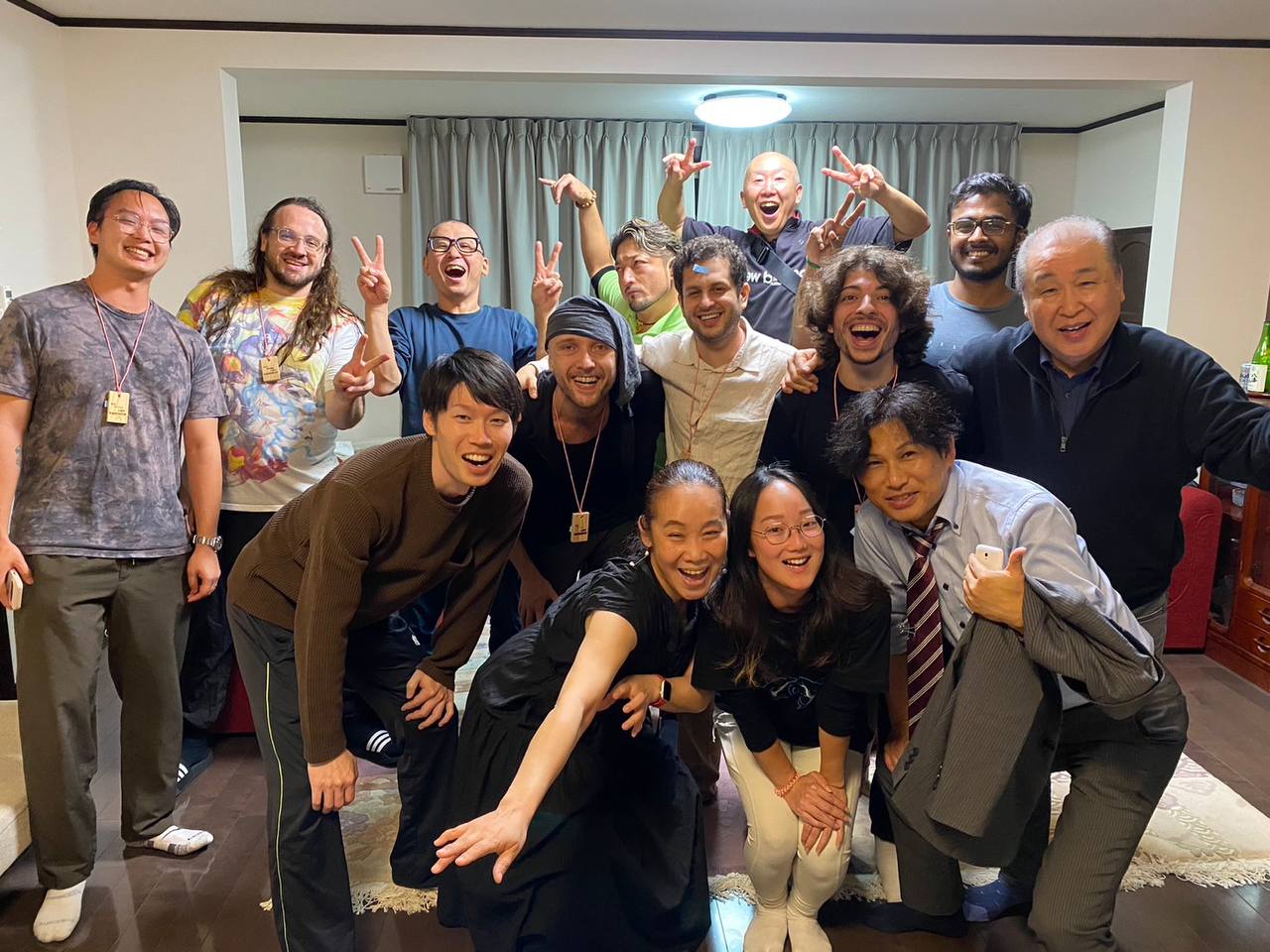
I did public speaking in Japanese for the first time, in front of a crowd of around 100 people, including the Mayor of Kesennuma. Very nervewracking, but it went as well as it could have. I did not have much time to practice either, so it was a tad rough presenting. I also realized that preparing for public speaking is very tough when I cannot read Japanese fluently, so I can’t keep effective notes. Nevertheless, it was good enough for KesenMemento to get the Mayor’s Award and Peoples’ Choice, so I am glad that my message got through to the community.
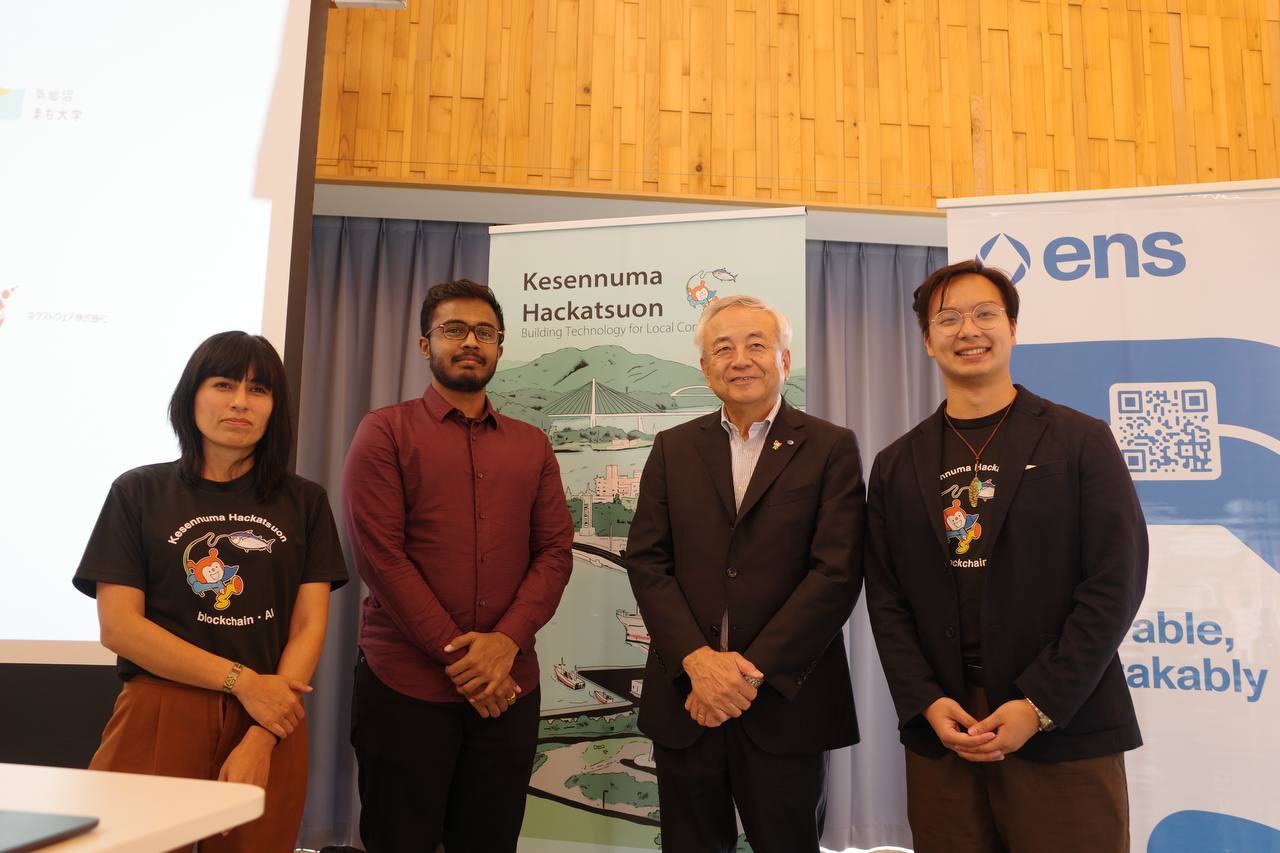
Next steps
I learnt a ton from the experience in Kesennuma, and have some ideas for next steps to continue building and growing.
Building Python Web Apps with Streamlit. With my current skillset, I think learning how to build web applications with Python would be the most complimentary with my existing knowledge in data science and GIS. I already know how to build web applications in R Shiny at a pretty high level, so complimenting that with the ability to work in Python would be very useful. Most developers know how to work with Python as well, compared to R.
Machine Learning / AI. I want to have more experience with implementing machine learning and AI solutions, that are beyond the tutorial level. I have drastically increased the integration of AI into my workflows via Claude Code after this hackathon, but have yet to use it as part of the feature set of a project itself. With great timing, there are some past teams that I have worked with that are looking for some help that have pivoted into machine learning for marine biodiversity, so maybe this is the opportunity.
Trial migration to Kesennuma. I plan to sign up for the trial migration program to Kesennuma. Kesennuma offers a program where people who are interested in Kesennuma can live in public housing for up to two months, heavily discounted from normal rent prices. This would be a great chance to cement the connections that I have built during Hackatsuon and continue building on the success of projects like KesenMemento and ReelDeel.
Practice and improve Japanese. Specifically, with an emphasis on learning how to read and write better. With being thrust into the translator role often in Hackatsuon, I realized that being competent at both languages opens many additional opportunities. Even this time, I was called upon often to translate and be part of the most interesting conversations happening between the participants and the locals. I like being the window between groups, so with improved Japanese skills I can contribute in that role to an even greater extent.
Thank you to everyone that I met in this wonderful experience! Looking forward to when our paths cross again, and seeing what exciting ways you change the world! 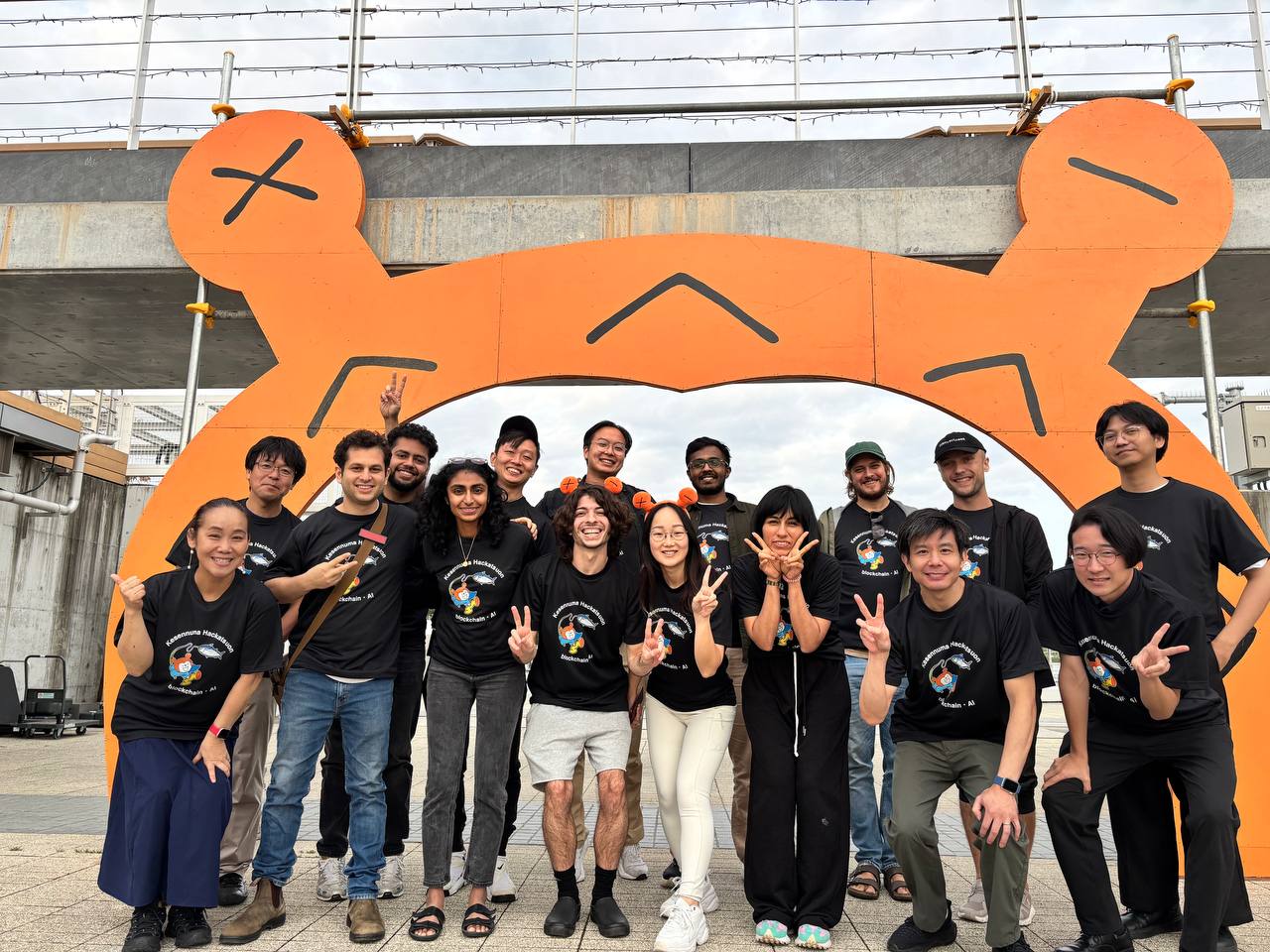
Places I visited
I saved the locations that I visited on this trip in this Google Maps List! Check it out if you are interested to explore Kesennuma.
Link: Google Maps List
